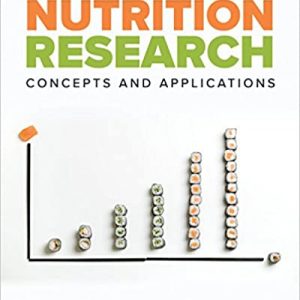Janeway?s Immunobiology 8th Edition by Kenneth Murphy
ISBN-13: 9780815342434
Janeway?s Immunobiology is a textbook that introduces the immune system in all its aspects to undergraduates, and also provides a treatment of the subject that is comprehensive enough to be useful to graduate students interested in research, and to medical students focused on clinical applications. The Eighth Edition has been thoroughly revised and updated and is available in both print and e-book formats.
Janeway?s Immunobiology continues to set the standard for currency and authority with its clear writing style and organization, uniform art program, and scientific accuracy. It presents a consistent point of view throughout?that of the host?s interaction with an environment containing many species of potentially harmful microorganisms. The full-color art program is conceptually coherent and illustrates the processes and mechanisms underlying the concepts in the text. The 16 chapters in this readable, accessible textbook are organized and presented in such a way as to help deliver a complete one-semester immunology course, beginning with innate immunity, then moving to adaptive immunity, and ending with applied clinical immunology.
Discussion questions are provided at the end of Chapters 2 to 16. These questions can be used for review, or as the basis for discussion in class or in informal study groups. Summaries conclude each section and each chapter. As in previous editions, a caduceus icon in the margins indicates topics which are correlated to Case Studies in Immunology, Sixth Edition by Geha and Notarangelo.
New in the Eighth Edition
Innate immunity has been updated and expanded and is now presented in two separate chapters (Chapters 2 and 3), as well as being further emphasized in the rest of the textbook. Chapter 2 covers antimicrobial peptides and the complement system, and Chapter 3 deals with cellular innate receptors and cell-mediated innate immunity (e.g. TLRs, phagocytosis, NK cells, interferon production, innate-like lymphocytes).
The section on complement has been reworked and reconceived?explaining the lectin pathway first?making it easier to teach by placing it into the context of innate recognition.
Evolution is now incorporated throughout the text, helping students see similar strategies used by different organisms.
The text and figures of Chapter 7 Signaling Through Immune System Receptors have been revised to present a cohesive synthesis of signaling for immunology, focusing on improved illustration of antigen recognition signaling and lymphocyte activation. Signaling through other receptors is dealt with wherever appropriate throughout the book.
Updated chapter on B-cell immune responses (Chapter 10), especially on trafficking of B cells in peripheral lymphoid organs (e.g. lymph nodes) and the locations at which they encounter antigen.
Coverage of mucosal immunity (Chapter 12) has been brought up to date, including responses to the commensal microbiota and the role of specialized dendritic cells and the regulatory T cells in maintaining tolerance to food antigens and commensal bacteria.
Chapter 13, Failures of Host Defense Mechanisms, has been reorganized and revised to structure an understanding of primary immunodeficiencies in the context of developmental pathways.
Chapter 16, Manipulation of the Immune Response, has been heavily revised to include a greater emphasis on clinical issues and a complete update of immunotherapeutics and vaccines.
Many new and revised figures illustrate the processes and mechanisms underlying the concepts presented in the text.
The icons used have been updated and expanded to incorporate a new emphasis on signaling pathways.
New references have been added throughout the text.











